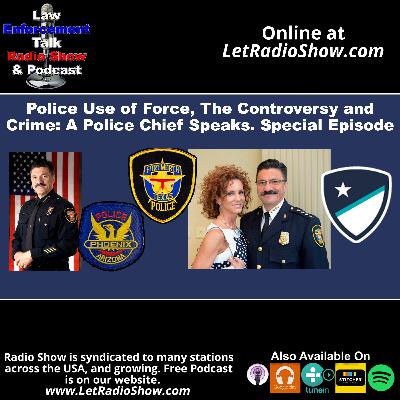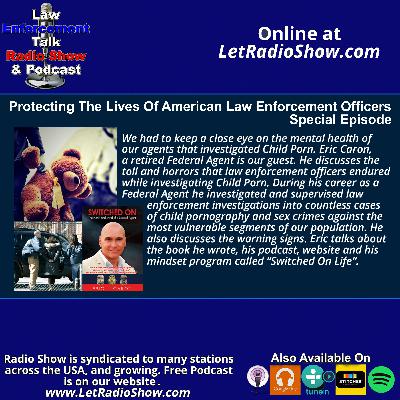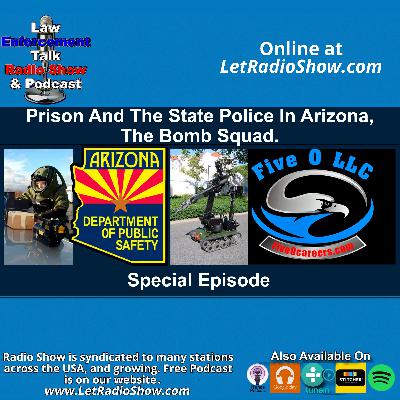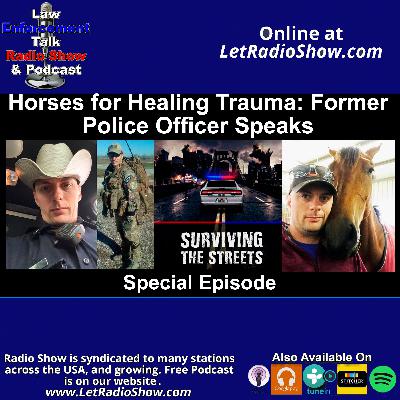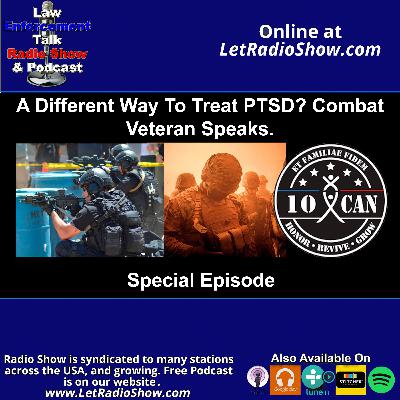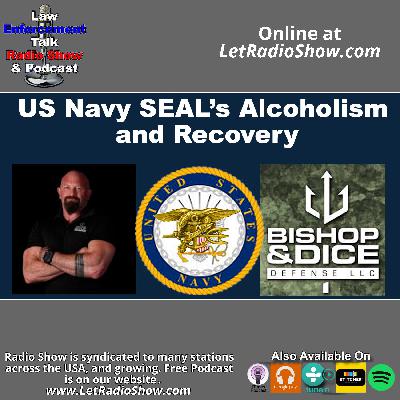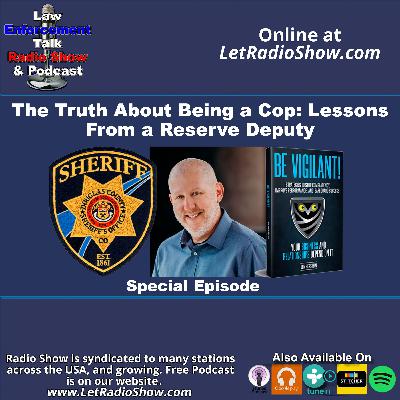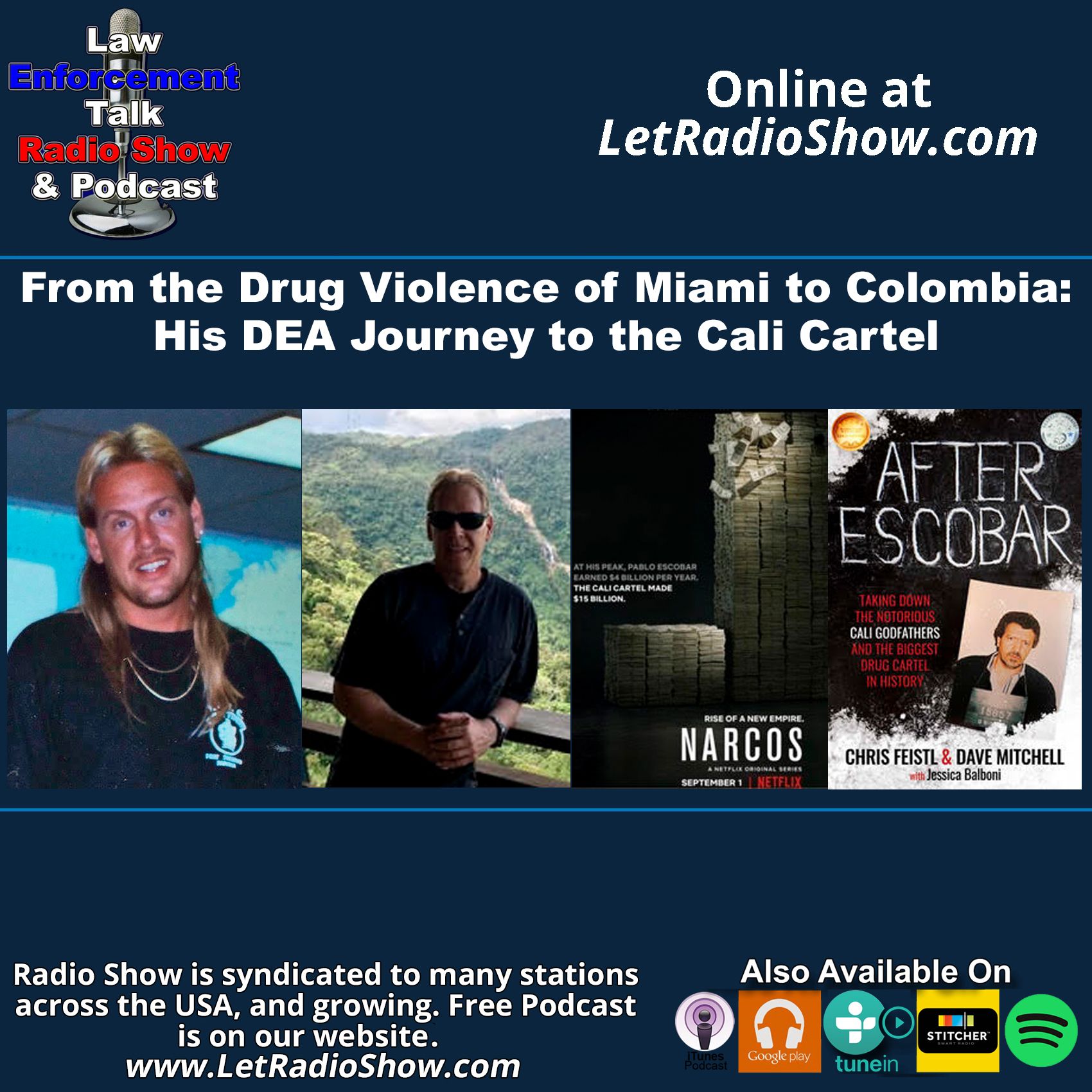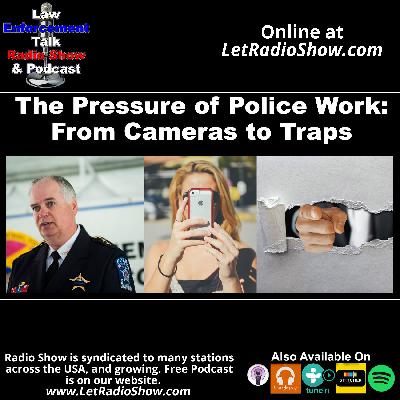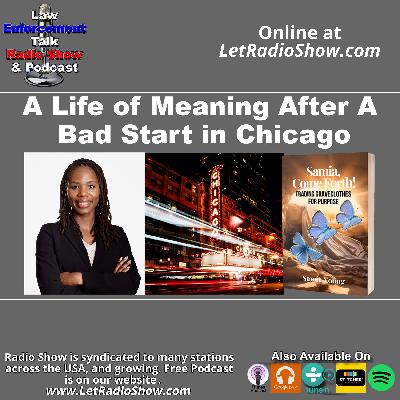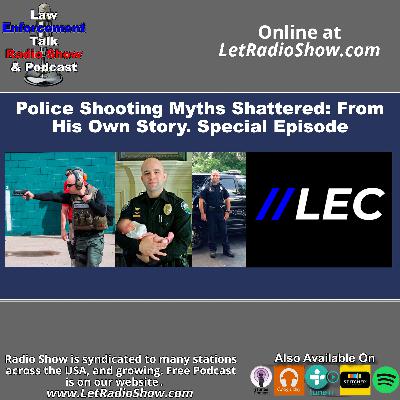Police Use of Force, The Controversy and Crime
Description
Police Use of Force, The Controversy and Crime: A Police Chief Speaks. Special Episode. Few issues spark as much public debate, controversy, and division in America today as policing, particularly when it comes to the use of force. From nightly news reports to viral clips on Facebook, Instagram, and other social media platforms, the conversation often feels polarized and oversimplified. Jeffrey Halstead is the guest on the Law Enforcement Talk Radio Show and Podcast, available for free on their website, on Apple Podcasts, Spotify, Youtube and most podcast platforms.
But what happens when the microphone is given to someone who has lived the profession, commanded officers during critical incidents, and faced the hard truths of law enforcement leadership? The Law Enforcement Talk Radio Show and Podcast promoted across their Facebook , Instagram , LinkedIn , Medium and other social media platforms.
Retired Police Chief Jeffrey Halstead has done just that. With over 30 years in policing, including service as a Commander with the Phoenix Police Department and as Chief of Police in Fort Worth, Texas, Halstead offers a perspective rooted not in headlines, but in real-life decisions, policies, and crises. Look for supporting stories about this and much more from Law Enforcement Talk Radio Show and Podcast in platforms like Medium , Blogspot and Linkedin .
On an episode of the Law Enforcement Talk Radio Show and Podcast available for free on their websits, plus on Apple Podcasts, Spotify, and other platforms, Halstead shared candid insights about crime, crisis management, and one of the most controversial aspects of policing: police use of force. Police Use of Force, The Controversy and Crime: A Police Chief Speaks. Special Episode.
A Career Defined by Service and Leadership
Halstead’s law enforcement journey began in Phoenix, Arizona. The Phoenix Police Department is accredited through the Arizona Law Enforcement Accreditation Program, which emphasizes professionalism, integrity, and accountability.
“The Phoenix Police Department was where I learned the foundation of policing,” Halstead said. “It wasn’t just about making arrests. It was about protecting life, seeking justice for victims, and building lasting community partnerships.” Available for free on their website and streaming on Apple Podcasts, Spotify, and other podcast platforms.
After a distinguished career in Phoenix, Halstead retired at the rank of Commander. In 2008, he accepted the role of Chief of Police in Fort Worth, Texas, a rapidly growing city in the Dallas/Fort Worth metroplex. The Fort Worth Police Department, founded in 1873, serves more than 978,000 residents with nearly 1,900 sworn officers. Its motto, “Service with Respect, Dedicated to Protect,” reflects the balance between community trust and enforcement that Halstead tried to uphold.
During his tenure, Halstead was responsible for introducing body-worn cameras, a decision that was not without controversy at the time. “There was skepticism about cameras,” he recalled. “But I knew they would bring transparency and help strengthen public confidence. Today, they’re considered essential tools.” Police Use of Force, The Controversy and Crime: A Police Chief Speaks.
The Realities of Police Use of Force
One of the most misunderstood elements of law enforcement, according to Halstead, is the use of force.
“People often see a 20-second clip on social media and draw conclusions,” he explained. “But they don’t see the totality of the incident, the fear, the resistance, the split-second decisions. Every action an officer takes must meet a very strict legal standard.” The Law Enforcement Talk Radio Show and Podcast episode is available for free on their website , Apple Podcasts , Spotify and most major podcast platforms.
That standard is grounded in the Supreme Court’s 1989 decision in Graham v. Connor, which established that the level of force used by an officer must be “objectively reasonable” based on the circumstances at the moment.
“Reasonableness and proportionality are the guiding principles,” Halstead said. “Officers are trained to use the minimum amount of force required to control a situation. But when things escalate quickly, their training has to kick in immediately.”
The Use-of-Force Continuum
To guide officers, many departments rely on what is known as the use-of-force continuum, a model endorsed by the National Institute of Justice. This model outlines escalating techniques:
Soft techniques: grips, holds, and restraints.
Hard techniques: punches, strikes, and kicks when resistance intensifies.
Intermediate options: tasers, batons, or chemical sprays.
Lethal force: the highest level, used only when there is imminent danger of death or serious injury.
Halstead emphasized that the continuum is not always linear. “Encounters in the field don’t follow neat stages,” he explained. “An officer may shift from verbal commands to lethal force in seconds if confronted with a firearm. That’s the reality.” Police Use of Force, The Controversy and Crime: A Police Chief Speaks. The full podcast episode is streaming now on Apple Podcasts, Spotify, and across Facebook, Instagram, and LinkedIn.
Controversial Tactics and Public Scrutiny
Certain tactics have become flashpoints in the national debate:
Neck Restraints: Once taught in academies, they are now classified as deadly force in many jurisdictions or banned outright. “There’s growing recognition of their danger,” Halstead said.
Prone Restraints: Placing someone face down is common for control but can cause positional asphyxia if not managed quickly. “It must be temporary and carefully monitored,” he noted.
Lethal Force: The most scrutinized decision an officer can make. “It is always the last resort,” Halstead emphasized. “And it leaves lasting scars on the officers involved.”
Despite the media focus, Halstead argued that most encounters end peacefully. “The overwhelming majority of police interactions don’t involve any force at all,” he said. “But those stories don’t go viral on Instagram or Facebook. Controversy drives social media and news coverage.”
Race, Disparities, and Trust
Research shows racial disparities in use-of-force incidents, “These disparities are real, and we can’t ignore them,” Halstead acknowledged. “But it’s also important to remember that officers make decisions based on behavior, not race. The challenge is building accountability systems that both communities and officers trust.” Police Use of Force, The Controversy and Crime. The Law Enforcement Talk Radio Show and Podcast promoted across their Facebook , Instagram , LinkedIn , Medium and other social media platforms.
He advocates for expanded training, stricter oversight, and more open conversations between police and citizens. “Reform doesn’t mean vilifying officers. It means improving systems so that both safety and fairness are priorities.”
Crisis Management: The Other Side of Policing
Beyond force, another key responsibility of policing is managing crises, everything from active shooters to natural disasters.
“In critical moments, communication can be the difference between chaos and control,” Halstead explained. “When confusion spreads, lives are at risk.”
This belief inspired him to launch Evertel Technologies, later rebranded as Genasys, a company that builds secure communication platforms for first responders. Their product, CONNECT, is now used by agencies in 21 states. Check out the Law Enforcement Talk Radio Show and Podcast promoted across their Facebook , Instagram , LinkedIn , Medium and other social media platforms.
“Strong communication builds trust internally,” Halstead added. “When leadership and frontline officers are aligned, the whole agency operates more effectively.”
The Role of Social Media in Policing
Today, public perception of law enforcement is heavily influenced by social media platforms like Facebook, Instagram, and LinkedIn. While these platforms help departments share updates and build transparency, they also fuel controversy when videos go viral without context.
Halstead acknowledged both sides. “Social media is a powerful tool for outreach,” he said. “But it also spreads misinformation faster than facts. One video clip on Instagram can undo months of trust-building. That’s why officers and agencies have to be proactive in communication.” Police Use of Force, The Controversy and Crime.
Looking Ahead: Building Trust in an Era of Controversy
Chief Halstead’s message is clear: policing is complex, messy, and often misunderstood. But it is also essential to the safety and security of communities.
“The public deserves transparency, but they also deserve context,” he said. “The men and women in uniform often face life-or-death decisions in seconds. If we want meaningful reform, w

